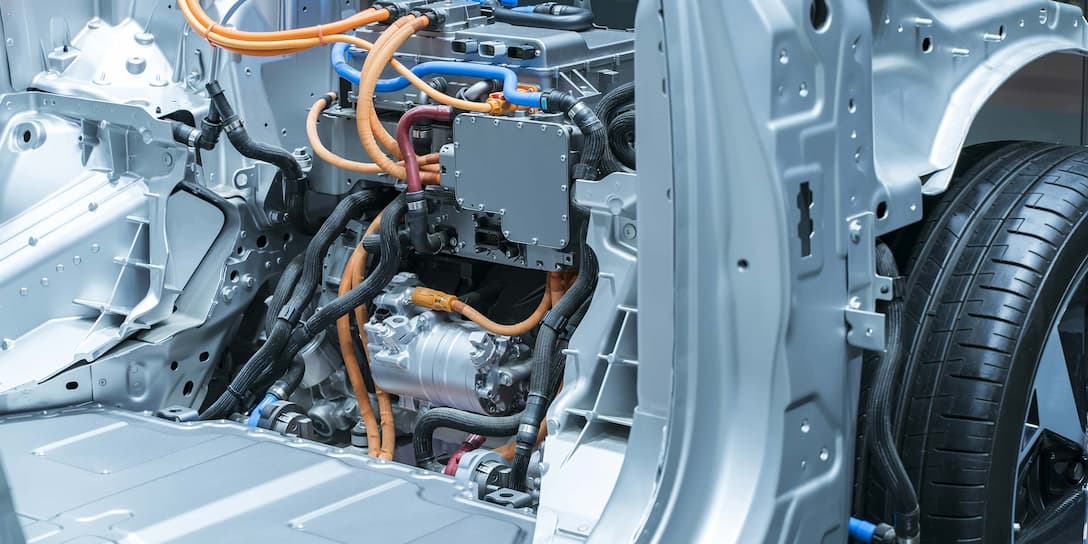What are the main challenges when moving electric cars, compared to traditional ones? And what are the best practices for safely, quickly, and easily getting an electric car off the line in a production plant? “Investing in a premium product generally pays off in the long run,” explains Philip Rüdel, management assistant at a Stringo German distribution partner FFB.
In any automotive production plant, time is money. Every minute that the production line is paused, money is being lost. Therefore, a car that doesn’t start at the end-of-line has to be moved out of the way as quickly as possible. Using car dollies or vehicle skates to do this is inefficient, since it requires at least four people to manually push the car out of the way. The lack of maneuvering control with this method also increases the risk of employees getting injured while pushing the car.
Electric vehicle movers are a safer and more efficient option – especially when it comes to tackling the particular challenges of moving EVs.
As the demand for electric cars keeps growing, more and more traditional automotive manufacturers are shifting at least part of their production from ICE (internal combustion engine) powered to electric vehicles. To adapt to this new situation in a cost-effective way, these manufacturers need to invest in equipment that lets them handle electric cars in the same facilities as traditional cars.
3 challenging aspects of moving electric cars in a plant
1. The extra weight
Electric cars are significantly heavier than ICE vehicles. This means moving them with any method that requires manual pushing will require more force, manpower, and maneuvering space compared to moving traditional cars. The additional weight also makes control and safety a bigger issue; especially when moving the car up or down a sloping surface.
2. Immovable wheels
Depending on which type of engine an EV has, moving it even a short distance by simply rolling it can be nearly impossible. When there’s no power supplied to certain electrical engines, their magnetic fields act as a brake, preventing the wheels from turning. This means that a non-starter in an electric car production plant can’t be moved out of the way by manually pushing it.
3. Electricity generated by rotating wheels
A common issue with four-wheel-driven EVs is that by rotating the wheels, electricity can be generated back into the vehicle, which can damage electrical components. To move the car without risk of damage, all four wheels need to be lifted.
Best practices for moving EVs quickly and safely
Philip Rüdel, a management assistant at a Stringo German distribution partner FFB, a company that provides forklifts and vehicle transportation equipment to industrial businesses, such as car manufacturers. Considering the specific challenges of electric vehicles, Philip explains that the best option for moving them safely and efficiently in a plant is to use equipment that:
- Doesn’t require additional force to manage the extra weight
- Allows the car to be moved without rotating the wheels (i.e. can load all four wheels if necessary)
- Enables controlled maneuvering, even up and down sloping surfaces
- Can be operated by a single person
- Is CE certified and produced by a supplier who offers product warranty, service, and support
With the increased electrification of the automotive industry, Philip sees a growing demand for flexible vehicle moving solutions; especially from manufacturers who produce EV and ICE vehicles in the same plant. “Many of our clients appreciate being able to move their vehicles by loading either only the front wheels or all four wheels.”
A popular solution among FFB’s automotive clients is combining a standard vehicle mover with a Stringo DuoMover. The DuoMover quickly converts the standard mover (which loads only the front wheels of the car) into a four-wheel mover. This way, the manufacturers have maximum flexibility to meet all their vehicle moving needs. For a plant that exclusively produces four-wheel driven electric cars, a designated four-wheel mover is a better option.
If you’re considering purchasing a vehicle mover for your plant, Philip’s advice is to prioritize safety and quality over price:
“Investing in a premium product generally pays off in the long run, since the machines are likely to serve you well long after the product guarantee period has expired.”
To learn more about how the electrification of the automotive industry is affecting the need for flexible vehicle moving solutions, don’t miss this interview with Magnus Grafström, CTO of Stringo.





